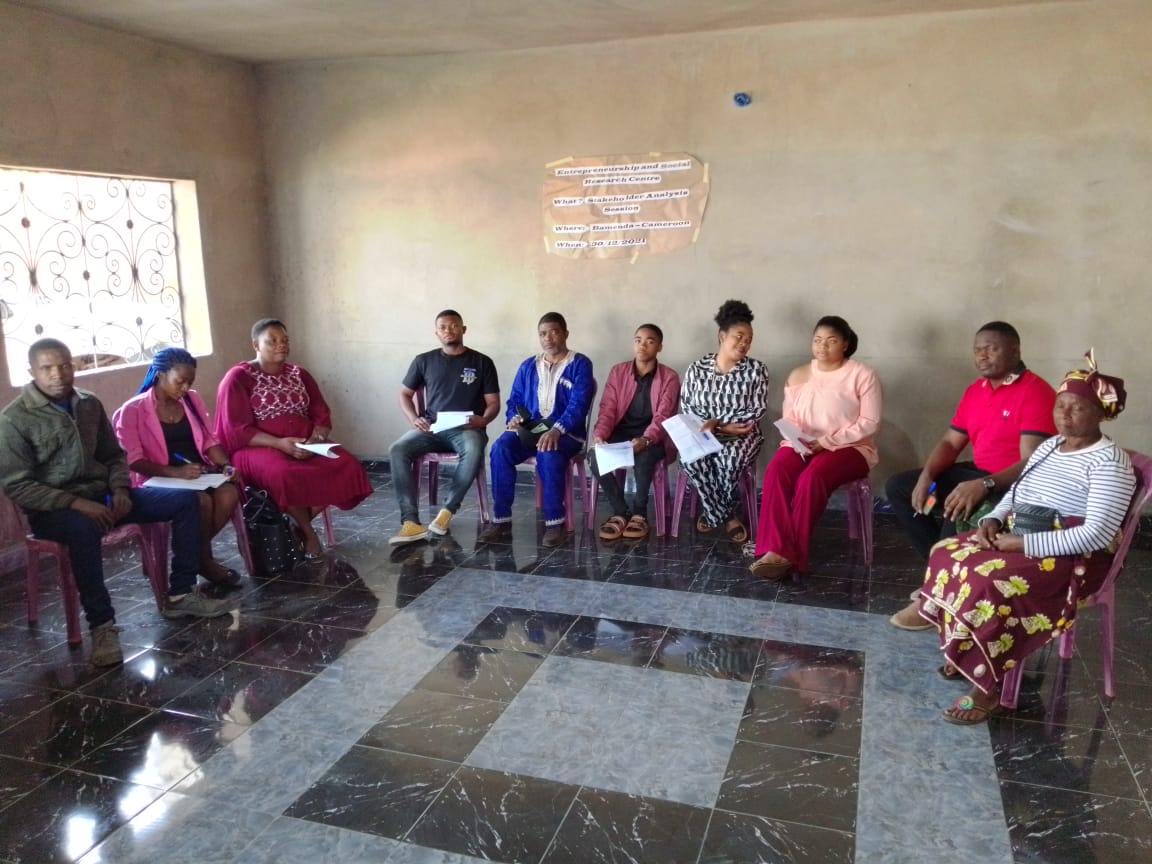
A REPORT OF A WORKSHOP ON STAKEHOLDER ANALYSIS IN ESRC CAMEROON HELD ON THURSDAY 30TH December 30, 2021
The workshop which was chaired by Mr. Emmanuel Wepngong began with a word of prayer from Mme Racheal, after, was an introduction and relationship building in which the participants got to know each other. Later was the introduction of the organization that was done by prof Vukengkeng Andrew W. who enlightened the participants on what the organization aimed at.
Also, Mr. Emmanuel Wempngong who was the main speaker of the workshop took the floor and highlighted some key things that the participants had to know at the end of the workshop. He then gave an exercise on the participant’s understanding of ESRC. In this exercise, the participants deliberated on the following questions.
– List on a piece of paper those with whom you think ESRC needs to work directly to encourage achievement the vision of this — organization
– Employees
– Investors
– Government (regional and local council)
– Other NGOs
– Media
– Bank and Creditors
– Funding Agencies
– Quarter Heads
– Unemployed young graduates
– Who are the most important actors with whom you work
– The unemployed graduates, students
– On whose actions does the success of ESCR most depend
– The actions of the members
– Among which actors does the program want to encourage change so that they can achieve their visions
– Within the schools
– Local councils
– Who are the ultimate beneficiaries?
– Young graduates and unemployed
– Students
– The underpreviledged
– Who can help or hinder the work of the organization
– The state (local authorities)
– The members
– What areas do you need to work in?
– Agriculture, Education, Research, Trade and Culture
– What do you need to do in these areas?
– Assignment
– How will you stay effective, efficient and relevant?
– We have to stay focus on the vision and mission of the organization, be regular and consistent, setting goals, updating members’ skills and updating their activities, be accountable to the stakeholders.
After the exercise, he drilled the participants on understanding stakeholders and stakeholder analysis. Here, he defined a stakeholder according to Freeman (1984) as “any group or individual who can affect or is affected by the achievement of the organization’s objectives”.
– why stakeholder analysis (identify the stakeholder likely to be affected, identify the consequences of any change in the organization that is, success criteria)
– meeting stakeholder needs, categorizing stakeholders.
Within this section, some questions were posed to the participants so they could best understand what is meant by stakeholder analysis, some of these questions were:
– Who are the stakeholders
– What is their background
– Who are they connected with
– What things matter to them
– What does the organization need from them (funds)?
How is it best to communicate with them (be diplomatic in your approach)
Evaluate the risk factor working and opening up with this partner.
With the above questions put in place, the participants were now able to understand who a stakeholder is, what stakeholder analysis is and how the organization can associate with the various stakeholders.
Furthermore, the speaker gave a drill to the participants in which they were asked to fill a stakeholder Matrix. And before doing that, he highlighted some key things to be taken into consideration. These points were; its either the organization is out to:
– Learn from stakeholders
– Influence them
– Inform them
– Instruct them or
– How much can the stakeholder compel.
Finally, the coordinator brought out the advantages of stakeholder analysis which are: get to know stakeholders better, better manage relationships, risk identified and make better strategies and decisions.

This Post Has 0 Comments